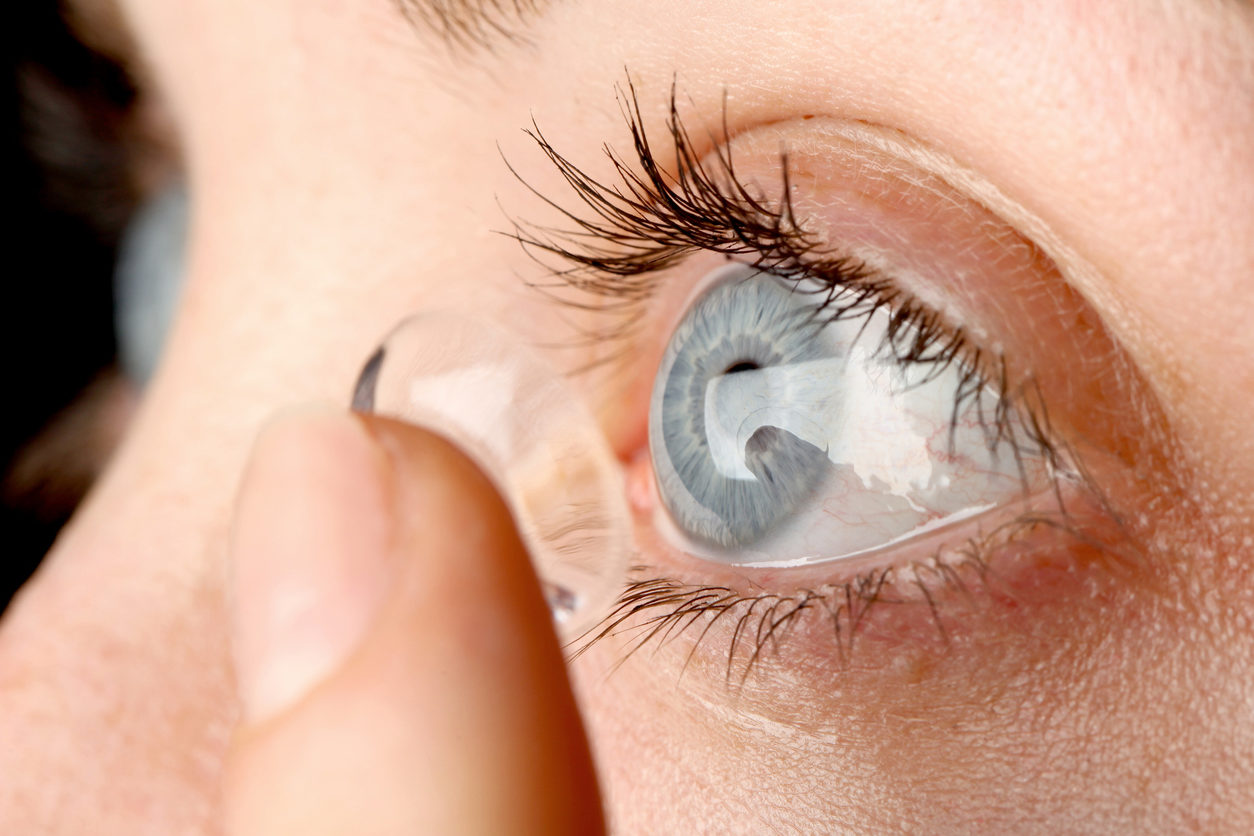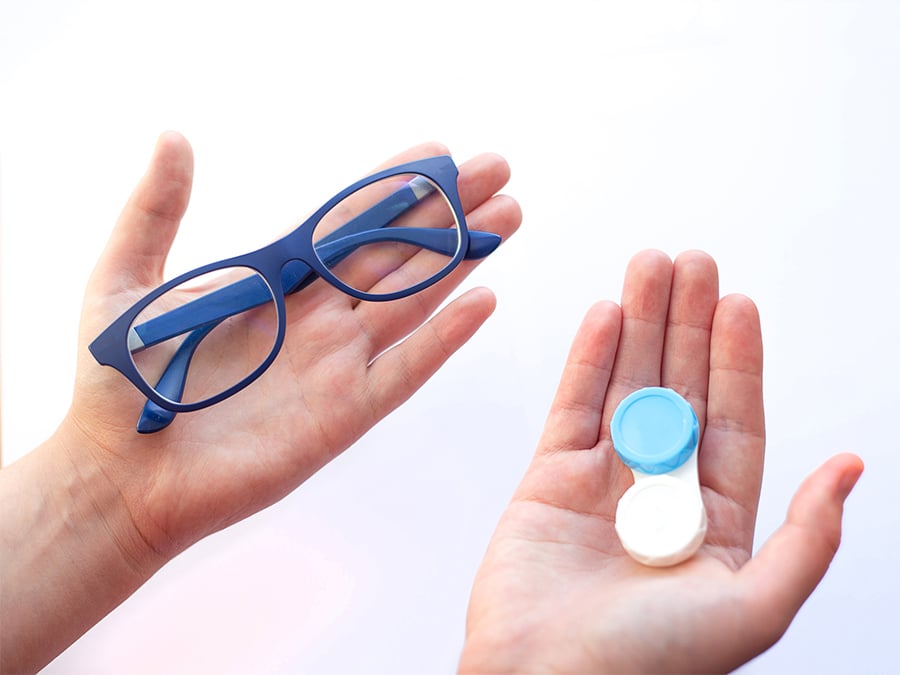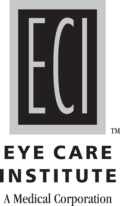Different Types of Contact Lenses
For more than a century, contact lenses have been a safe and effective alternative to glasses for those who require correction for their reading or distance vision. Contacts are worn by over 40 million people with vision problems such as:
- farsightedness
- nearsightedness
- astigmatism
- presbyopia
- irregular corneal shapes or surfaces
Contact lenses are medical devices, and, as such, are regulated by the Food & Drug Administration. Patients wishing to obtain contacts require a prescription from their eye care professional.

They are designed to be worn over the cornea, or front part of the eye, and rest on a layer of tears produced by the eye. Contacts come in many sizes, shapes, materials, and powers to meet the visual needs of the contact lens wearer. The type of contact you need, the design, and the fit will be determined by your eye care professional at your contact lens examination.
What People Say About Us!
"I have been happy with the care I have received at Eye Care Institute. They really do a tremendous job taking care of many patients. It takes me over 2 hours to drive to Santa Rosa from Fort Bragg, but I find it well worth it."
Click here to read more reviews.
Contacts Vs. Glasses: What You Should Know
There are many reasons to consider using contacts instead of glasses. Many people will say they just don’t like how they look in glasses. However, there are many practical benefits of contact lens wear.

- Contacts move with your eye, allow a natural field of view, have no frames to obstruct your vision, and greatly reduce distortions.
- They do not fog up, like glasses, nor do they get splattered by mud or rain.
- Contact lenses do not get in the way of your activities.
- Contact lenses, compared to eyeglasses, generally offer better sight.
- Some Things to Remember About Contact Lenses
Although there are many benefits of wearing contact lenses, there are a few important things to consider.
- Wearing contact lenses involves additional time. The initial contact lens examination is more extensive than an examination for glasses and therefore takes longer. More follow-up visits to maintain eye health may also be necessary. It is also important to spend time on routine lens care.
- If you are going to wear your lenses successfully, you will have to clean and store them properly, adhere to lens-wearing schedules, and make appointments for follow-up care.
- If you are wearing disposable or planned replacement lenses, you will have to carefully follow the schedule for throwing away used lenses.
To learn more about our services click on the links below:
FAQs For Contact Lenses
How Old Do You Have to Be Before You Can Wear Contact Lenses?
There isn’t a set age for when a child can wear contact lenses — it’s more of a decision between you and your child based on if he or she is responsible enough to wear them. It’s estimated that 4 million U.S. children under the age of 18 wear contacts. Children’s eyes tolerate them quite well because their eyes are less dry than adults.
Here are some characteristics to consider to see if your child could do well with contacts.
- Is the child relatively responsible?
- Does the child have good personal grooming habits?
- Does the child keep his or her bedroom and bathroom clean?
- Does the child follow through on assigned chores without badgering?
- Is the child diligent with oral hygiene, brushing for two minutes and the like?
If you constantly have to tell your child to brush his or her teeth and if they’re very messy they may not be able to take the care required with contact lenses. After all, contact lenses need to be kept clean to avoid eye infections.
However, your child could be quite motivated to ditch his or her glasses, and they could be excellent candidates.
Together, the team at Eye Care Institute, you, and your child can discuss it if you think he or she is ready.
Are Non-prescription Costume Contact Lenses Safe to Wear?
It has been illegal for retailers to sell non-prescription contact lenses in the U.S. since 2005. Way back in 2010, the journal Pediatrics posted statistics of at least 13,500 emergency room cases that year due to children and teens wearing non-prescription contact lenses. Those numbers, while not officially kept, are probably even higher today.
You can wear non-refractive correcting contact lenses — actors do it all the time for zombie and other monster roles — but the lenses still need a prescription. This means that an ophthalmologist needs to fit the lenses.
How Do You Remove a Stuck Contact Lens?
Sometimes people who rub their eyes can push their contact up under the eyelid. Never put anything else in your eye to try and grab a lens up under an eyelid. You’ll usually be able to find it and get it down. But if you cannot, it’s a simple thing for us to do at the Eye Care Institute. Just stop in.
Is It Ok to Wear Contact Lenses When Playing Sports?
Contact lenses actually are preferred for anyone who needs refraction correction and is playing sports. Contact lenses don’t fog up. You can’t break the frames. They present an unobstructed field of vision and much better peripheral vision than with glasses. Contact lenses are stable when running.
Why Do Contact Lenses Tear?
Modern contact lenses are a far cry from the hard contacts of yore. Today’s lenses are so comfortable most people don’t even think about them when they are in their eyes. These lenses have to let a great deal of oxygen through the lens to the cornea to keep the cornea healthy. That comfort, thinness, and oxygen capability can make contacts rip at times.
Here are a couple tips on handling to prevent, or at least minimize, ripping:
- Don’t use your fingernails — Use your thumb and forefinger to slide the lens and break the suction. Don’t pinch with your nails.
- Unfold in solution — If a lens folds up in the palm of your hand, don’t pull the edges. Instead, add some solution and massage the submerged lens until it opens.
- Keep them moist — Never store lenses dry. And, if you feel as if your lenses have become dry on your eyes add a couple of rewetting drops before removing them.
- Keep your lens case full — Don’t skimp on your solution. Keep your lens case full so the lenses don’t stick to the side.
- Don’t wear a torn lens — It may be tempting to try and wear a torn lens, but it will feel really bad in your eye (that’s often the way you discover you’ve torn a lens), and you can actually scratch your cornea.
